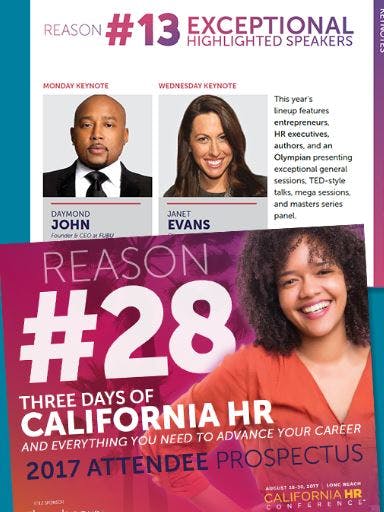PIHRA’s California conference, which concluded yesterday, is, in many ways, similar to other large HR conferences anywhere in the U.S.
One of the two or three largest HR conferences, the PIHRA conference offers the usual assortment of workshops, certifications, networking opportunities and vendors promoting everything from branded gift products to team-building activities to background screening and more, though technology was fairly lightly represented.
Shoutout here to BambooHR, whose VP Rusty Lindquist did a masterful and refreshingly un-sales-like presentation of high impact HR and the economic urgency of focusing on people and less on processes.
What makes the PIHRA conference unique in my experience is that the majority of the 2,000 or more attendees are from a single geographic region — Southern California, where all the PIHRA chapters are located. As a consequence, though they come from almost every possible industry sector, they all share so many of the same issues and challenges.
Yet what surprised me was what I heard when we spoke about their specific concerns. Recruiting talent, retaining talent, the burden of administrative responsibilities all got mentioned, but behind all that was near unanimity about dealing with the challenge of change.
One fairly new HR leader of a modest non-profit providing health care to the indigent told me about his work to introduce structure and organization. An HR director with a multi-site retail operation talked about how her CEO is looking to her for help in developing a customer-centric company culture. A building services company is counting on HR to develop a “people strategic plan” to help it expand.
These three examples may not seem so striking when you read about it. Yet hearing about them from each of these leaders and talking with others, most of whom are millennials, you feel their enthusiasm as well as sense their apprehension about stepping into what is uncharted territory.
I had one 20-something HR assistant confide that she has been tasked with working with a small group of managers to come up with a replacement for the traditional annual review. All of the managers agreed that doing performance reviews was an unwanted task, that “gets in the way of doing the real work,” as she put it. But steering them into a new system like regular one-on-ones, and suddenly they want to keep the annual review.
The common thread here is cultural change; none as dramatic as the task facing Uber’s new CEO, but change nonetheless. What most are struggling with is not the idea of change, but the tactical implementation of it. Who can argue with having a “people first” strategy? But in a moment of candor, the manager in charge of developing one admitted to me she didn’t really have a good idea of just what that meant to a company of hourly workers earning only a few dollars more than minimum wage.
To say the pace of business change is accelerating is to state the obvious. To say HR needs to be strategic is easy. To explain how, and especially how at a modest sized organization, is not so easy.
HR, especially, but not exclusively at the SMB level, is struggling with change. Unlike other operating units, which have traditionally been included in developing strategy and in execution, this is new territory for HR. Learning how to be strategic is one side of the coin, implementing the changes dictated by that strategy is the other.
For the mostly young HR leaders and future leaders I spoke with this week at PIHRA, they are looking for help, even if sometimes they didn’t know that. It’s one reason conferences like PIHRA and smaller, more intimate conferences are so valuable. They enable HR people to connect, share experiences and provide each other with help and advice.
